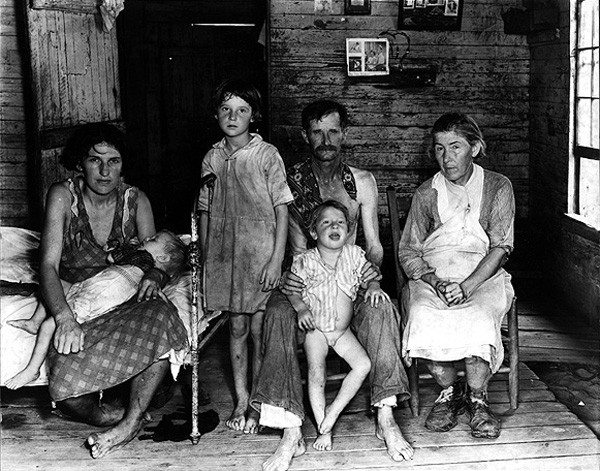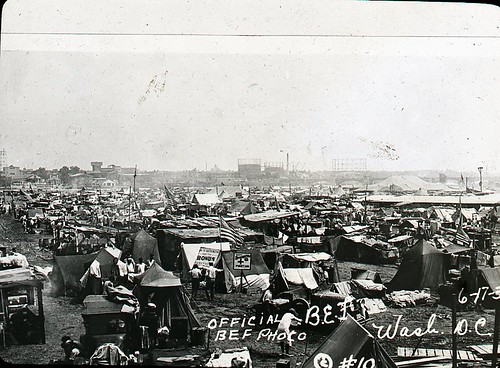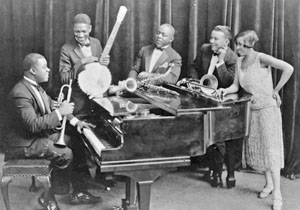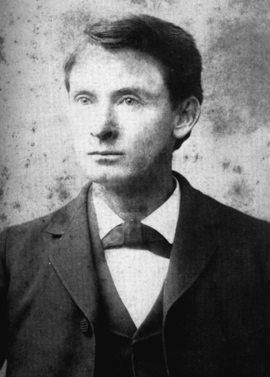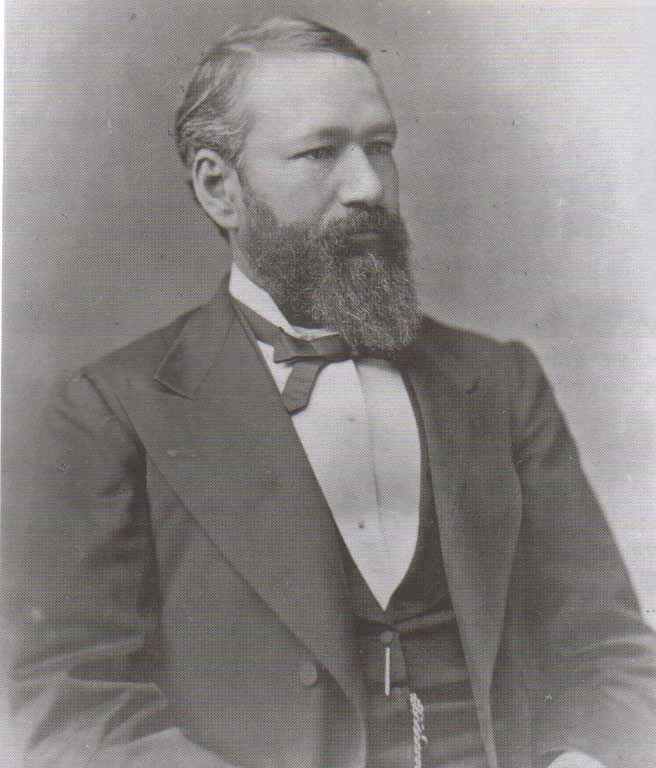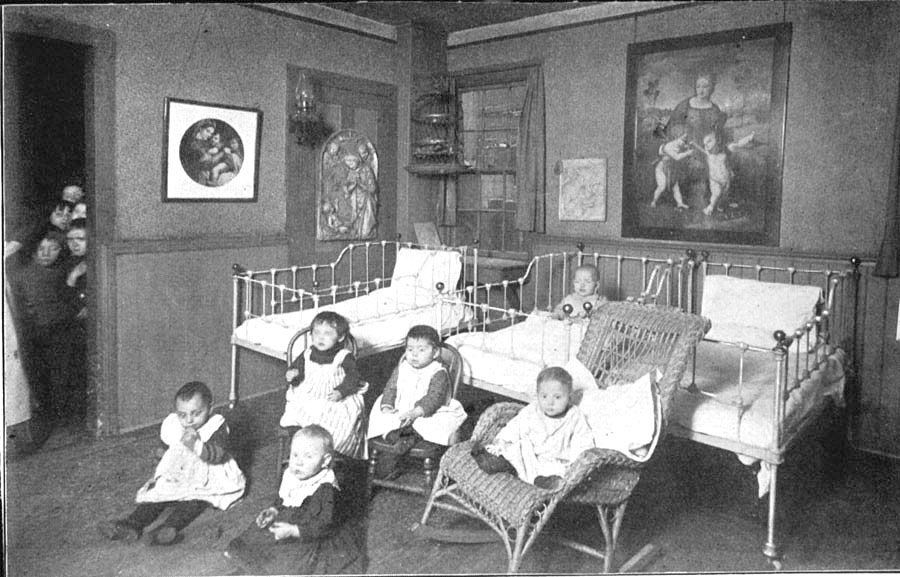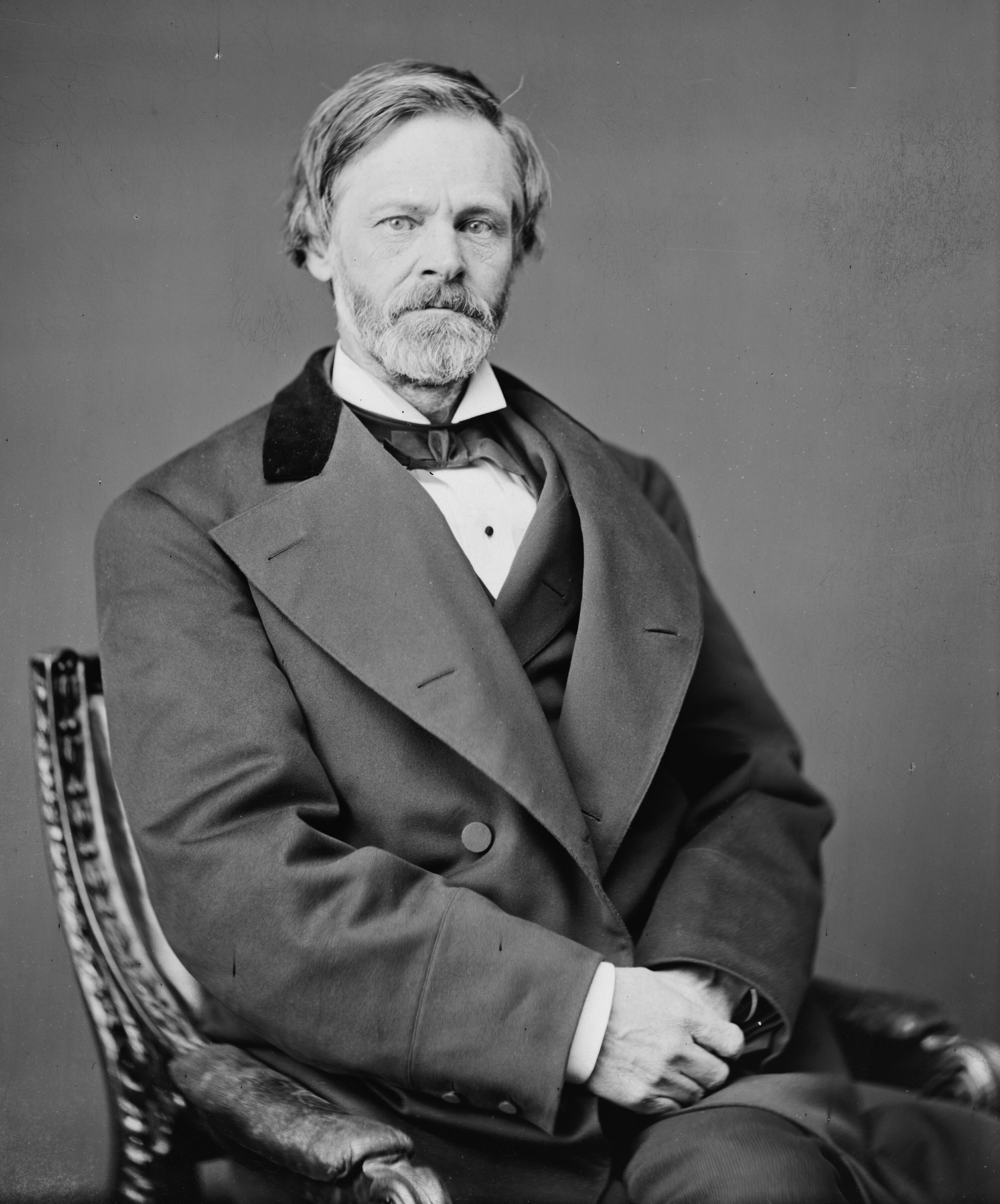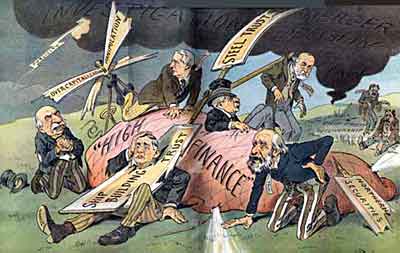I) Economic problems of the 1920s
A) Farm Crisis – farmers were plagued with overproduction, falling farm prices, and declining income throughout the 1920s.
1) Over expansion and debt – high prices during the war had encouraged farmers to increase their level of debt; when prices fell in the recession of 1920-21, they had great difficulty in repaying this debt. Because there were no government subsidies, most farmers in the decade of the 1920s continued in this condition (or worse) for the next ten years or so.
2) Non-Partisan League – called for government intervention (the government ownership of the grain elevators and slaughterhouses, easier credit, and tax exemptions for farm improvements). This group was strongest in the upper Midwest (the Dakotas and Minnesota); it remained a force into the 1940s, particularly in Minnesota where it was transformed into the Farm-Labor Party.
3) McNary-Haugen Bill – passed twice by Congress (1926 and again in 1927), but was vetoed both times by Calvin Coolidge. This bill introduced the concept of farm parity (which was a guarantee that farmers could sell their crop at a higher price than it cost them to produce it). A similar law was not passed until the New Deal.
4) Rationalization of the family farm – more and more families were in fat being pushed off the family farm by the worsening economic conditions; this farmland was then bought up by corporations, who in turn then hired labor (often, the family who had been forced to sell their farm) to work on these farms.
5) Dustbowl – on the Great Plains, the economic hardships were worsened for farmers by the onset of drought; this area had never received a great deal of rain (settlement had only been made possible by the techniques of “dry farming”), and the extended drought coupled with poor soil conservation practices produced the most famous images of the Great Depression.
B) Decline of Organized Labor – the reaction against radical politics in general had a definite negative effect on organized labor; with the decline of organized labor also came a decline in the share of profits that workers got from the workplace.
1) “American Plan” (its evil opposite would, of course, be the “un-American Plan) – the description of the corporate drive for the open (anti-union) shop; the closed (or union) shop imposed upon the “individual liberties” of the American worker.
(a) Employer Welfare Plans – insurance, company athletic teams, and other company sponsored cultural and social events were all intended to fight the impression that workers labored for a coldly impersonal corporation that would throw them out into the streets as soon as an economic downturn occurred (which, of course, was the reality of the situation).
(b) Company unions – gave the appearance of employee representation; in reality, company unions were a way of sidetracking employee complaints about working conditions and wages. Corporations were able to push out or eliminate unions that were affiliated with the AFL, and replace them with unions that the companies could control.
2) Decline of mature industries – with the decline of mature industries, in particular the coal industry, labor lost many members in these industries which it had already organized, while more workers were finding employment in newer manufacturing industries (like automobiles), that the AFL had never been able to successfully organize in the first place.
3) Death of Samuel Gompers – Gompers died in 1924, while in office. William Green, who had formerly been an official with the United Mine Workers, replaced him. Green was not a dynamic leader, which the labor movement probably needed at this point desperately to battle against the tide of events.
4) Continuing labor racism
(a) Brotherhood of Sleeping Car Porters – led by A. Philip Randolph, by 1926 this union had several thousand members; the AFL, however, refused to charter the union, mainly because it had a largely black membership, and was led by an African American.
C) The Business Cycle – the so-called “boom and bust” cycle was an ongoing phenomenon for which we really have no good explanation. However, depression had happened in the past (1837-38, 1857-1861, 1873-1877, 1885-86, 1893-1897, 1907, 1920-1921), but had largely been self-adjusting (that is, they were waited out without government intervention).
1) “New prosperity” – according to economist Thorstein Veblen in 1921, this so-called new prosperity was based upon an “inordinately productive form of mechanical activity.” Machinery was able to produce more goods faster with fewer workers; but ultimately this also provided fewer customers to buy these goods.
2) Wall Street speculation – buying stocks “on margin” (that is, with money that was borrowed, in the expectation that the market would continue its upward trend. When the market crashed, these investors had to pay back these loans, which often wiped out most of the gains (and then some) that they had made previously.
3) Unemployment – increased from fewer than 500,000 to more than 4,000,000 between October and December 1929.
4) Federal Reserve Board – had fueled Wall Street speculation by keeping interest rates low through most of the 1920s; after the crash, the Fed reacted by raising interest rates at exactly the wrong time.
5) Smoot-Hawley Tariff (1930) – raised import duties to the highest levels in US history; this helped increase the downward spiral of the economy, as other countries responded by raising their tariffs, as well. Many European countries went off the gold standard; Germany ended paying reparations because it was not receiving promised loans from the US, and France and Great Britain also ended payments on wartime loans they had received from the US.
D) International economic crisis – we tend to forget that this was a worldwide depression, not only localized in the US. In fact, because other countries were less hesitant to intervene through political means in their own economies, the depression was less severe and lasted a shorter time period than in the US.
E) Hard Times – bread lines and soup kitchens became common sites in major US cities, and are our most common images of the Great Depression.
1) Joblessness – in many of the manufacturing cities in the Midwest and East, unemployment levels ranged between 25% to 50% of the workforce (Toledo was at the high end of those figures). Women, particularly married women, were forced out of the workforce, since they were there to earn “pin” money anyway, and were taking money out of the pocket of a male breadwinner.
2) “Sharing the misery” – even those workers still employed were working greatly reduced hours; sometimes only 1-3 days a week, and often for six hours or less a day. This allowed many more workers to remain on the job than would otherwise be the case; however, this method could only be used in larger manufacturing concerns, smaller ones could not afford to do this.
3) Return migration – many southern whites returned to the South during this time, since it would be easier to eke out an existence back on the family farm among relatives and friends. Not all internal migrants, however, chose to return to their former homes, or returned voluntarily.
(a) Mexican nationals – many Mexican nationals had moved north to manufacturing jobs; with the onset of hard times local government officials and other workers often used intimidation to force these people to vacate their northern homes.
(b) African Americans – remained in the North, preferring life there, as hard as it was, to returning to the South. In part, this was probably caused by the increase in physical violence against blacks in the South; lynchings increased in the 1930s for the first time in a decade.
(i) Scottsboro Boys – nine young black men were found sharing a boxcar with two white women early in the Depression, so naturally they were charged with rape, even though no evidence was ever presented verifying that any kind of sexual intercourse had been taken part of. The Communist Party gained the trust of a large portion of the African American population during this trial and the endless rounds of appeals for their role in the trial.
1) Crisis in confidence – consumer and business confidence in the expansion of the economy had created the extended economic boom; as the depression worsened and lengthened, this confidence evaporated.
2) Hoover’s response – Hoover was in many ways the personification of progressive politics; a technocrat, an able administrator, who believed that politics could be made apolitical, and that rational decisions could be made after one was able to gather sufficient information.
(a) Reconstruction Finance Corporation – a plan which loaned $700 million to failing banks and businesses; but the government also raised taxes to pay for this, which largely undercut its economic effectiveness.
(b) Bonus marchers – victims of an overzealous cavalry charge led by Gen. Douglas Macarthur, who ordered the shanties torched after removing the occupants at bayonet point.
(c) “Hoovervilles” – shantytowns that were thrown up using discarded scrap were referred to as a “Hooverville,” in a black humor poke at the man most people blamed for their abject condition.
1) Communist Party and Unemployed Councils – local agitation for rent relief and other kinds of assistance were often led by members of the Communist Party, or by those sympathetic to the immediate aims of the party in the affiliated Unemployed Councils.
(a) Sharecroppers’ Union – active among black sharecroppers in Alabama
(b) Ford Hunger March – the march on the River Rouge plant in 1932, demanding work; 4 marchers were killed, and more than 60 others were injured by the Ford Service Department (led by Harry Bennett and peopled by thugs) and the Dearborn Police (kind of an extension of the Ford Service Department). More than 20,000 people in Detroit marched in the funeral procession, while thousands more watched in respectful silence.
II) 1932 Presidential Election
A) Hoover’s popularity – Hoover, of course, was hugely unpopular; most of the blame and frustration with the economic woes most people were facing were placed upon him.
B) Franklin Delano Roosevelt – promised to balance the federal budget (Hoover was running the largest peace-time budget deficit in the country’s history at this time) and trim the federal payroll; his stand on religion and drink were completely unexamined during the campaign (much to his benefit). Roosevelt campaigned on the slogan “A New Deal for the American People.”
1) Background – patrician (meaning he came from old money, as did his cousin TR). In many ways, he tried to model his political career with that of his cousin’s—he served as New York assemblyman, secretary of the Navy, and he was the Democratic Party’s choice to run as Vice-President in 1920. In 1921 he was stricken with polio, and was never able to walk without some kind of assistance after that. That he was able to make a political comeback from this disease was due in large part to the assistance of his wife, his second cousin Eleanor.
2) The new deal--for Roosevelt, the "new deal" was simply a campaign slogan, rather than a well-thought out plan to implement socialism, or to provide a social "safety net" for some Americans. Roosevelt was willing to try just about any program, as long as he was convinced that it might work. As we will see, Roosevelt was very unwilling to overthrow the capitalist system; rather, he was convinced that the system had to be saved (although he did prove more willing to campaign against some groups of people). In 1932, the only thing Roosevelt really promised to do was to balance the federal budget.
3) FDR won 57% of the popular vote (against an immensely unpopular Republican candidate); the only state that he lost outside of New England was Pennsylvania.
a) The interim period--the interim months between Roosevelt's election in November 1932 and his inauguration in March 1933 saw conditions in the country worsen, as the country entered the depths of the Great Depression. Despite an offer from Hoover to collaborate on policies to stem the suffering, Roosevelt chose to remain at his home in New York, and let Hoover and the lame duck Congress deal with the consequences (and take the blame for what was happening.

